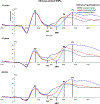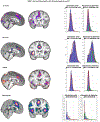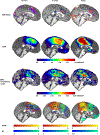Multimodal study of the neural sources of error monitoring in adolescents and adults
- PMID: 37212619
- PMCID: PMC10524909
- DOI: 10.1111/psyp.14336
Multimodal study of the neural sources of error monitoring in adolescents and adults
Erratum in
-
Correction to Multimodal study of the neural sources of error monitoring in adolescents and adults.Psychophysiology. 2023 Dec;60(12):e14464. doi: 10.1111/psyp.14464. Epub 2023 Oct 20. Psychophysiology. 2023. PMID: 37861188 No abstract available.
Abstract
The ability to monitor performance during a goal-directed behavior differs among children and adults in ways that can be measured with several tasks and techniques. As well, recent work has shown that individual differences in error monitoring moderate temperamental risk for anxiety and that this moderation changes with age. We investigated age differences in neural responses linked to performance monitoring using a multimodal approach. The approach combined functional MRI and source localization of event-related potentials (ERPs) in 12-year-old, 15-year-old, and adult participants. Neural generators of two components related to performance and error monitoring, the N2 and ERN, lay within specific areas of fMRI clusters. Whereas correlates of the N2 component appeared similar across age groups, age-related differences manifested in the location of the generators of the ERN component. The dorsal anterior cingulate cortex (dACC) was the predominant source location for the 12-year-old group; this area manifested posteriorly for the 15-year-old and adult groups. A fMRI-based ROI analysis confirmed this pattern of activity. These results suggest that changes in the underlying neural mechanisms are related to developmental changes in performance monitoring.
Keywords: ERN; ERP; adolescents; decision-making; fMRI; flanker task.
© 2023 The Authors. Psychophysiology published by Wiley Periodicals LLC on behalf of Society for Psychophysiological Research.
Figures










References
Publication types
MeSH terms
Grants and funding
LinkOut - more resources
Full Text Sources
Research Materials

